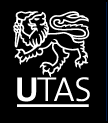Oncaea media
Giesbrecht (1891)
Download a fact sheet for Oncaea media (PDF 330KB)
Taxonomy
| Phylum | Arthropoda |
| Subphylum | Crustacea |
| Class | Maxillopoda |
| Subclass | Copepoda |
| Order | Poecilostomatoida |
| Family | Oncaeidae |
| Genus | Oncaea |
| Species | media |
Size
- Female: 0.65 – 0.96 mm
- Male: 0.56 – 0.67 mm
Distinguishing characteristics
- Size
- Form and location of genital apertures and sclerotization
Male
- Prosome 2.2 times the length of urosome, excluding caudal rami, 1.9 times urosome length, including caudal rami
- Caudal rami about as long as wide, much shorter than female
Female
- Exoskeleton moderately chitinised
- Prosome 2.6 times length of urosome, excluding caudal rami, 2.2 times urosome length including caudal rami
- P2 bearing somite without projection
- Genital double somite 1.9 times as long as maximum width (in dorsal aspect) and 2.6 times as long as post genital somites combined
- Double-curved sclerotization between genital apertures
- Anal somite 2 times wider than long, about 2/3 length of caudal rami
Note:
Closely related to O.scottodicarloi, to separate look at:
- Proportional lengths of urosome somites; elongated genital somite in O.media, genital somite is 2 times as long as the rest of urosome
- Form and location of sclerotization between genital apertures; in O.media genital openings are closer to top 1/3 of genital somite, in O.scottodicarloi genital openings are almost ½ way from top genital somite
- Relative lengths of endopod spines of P4
Distribution
- Epipelagic-mesopelagic
- Inshore, coastal and oceanic
- Australian distribution includes Gulf of Carpentaria, Great Barrier Reef, the North West Cape, New South Wales and south east including Tasmania
- World distribution: widespread in tropical and sub tropical waters of the Pacific, Indian and Atlantic Oceans
Ecology
- Eggs carried in paired sacs
- Omnivorous
- Feeds on small zooplankton and appendicularian houses, that form marine snow containing phytoplankton and bacteria
References
- Heron, G. A. and J. M. Bradford-Grieve (1995). "The marine faunaof New Zealand: Pelagic Copepoda: Poecilostomatoida: Oncaeidae." New Zealand Oceanographic Institute Memoir 104.
- Ohtsuka et al (1996)
- Razouls C., de Bovée F., Kouwenberg J. et Desreumaux N., 2005-2009. Diversity and Geographic Distribution of Marine Planktonic Copepods. Available at http://copepodes.obs-banyuls.fr/en
- Taw (1978)

